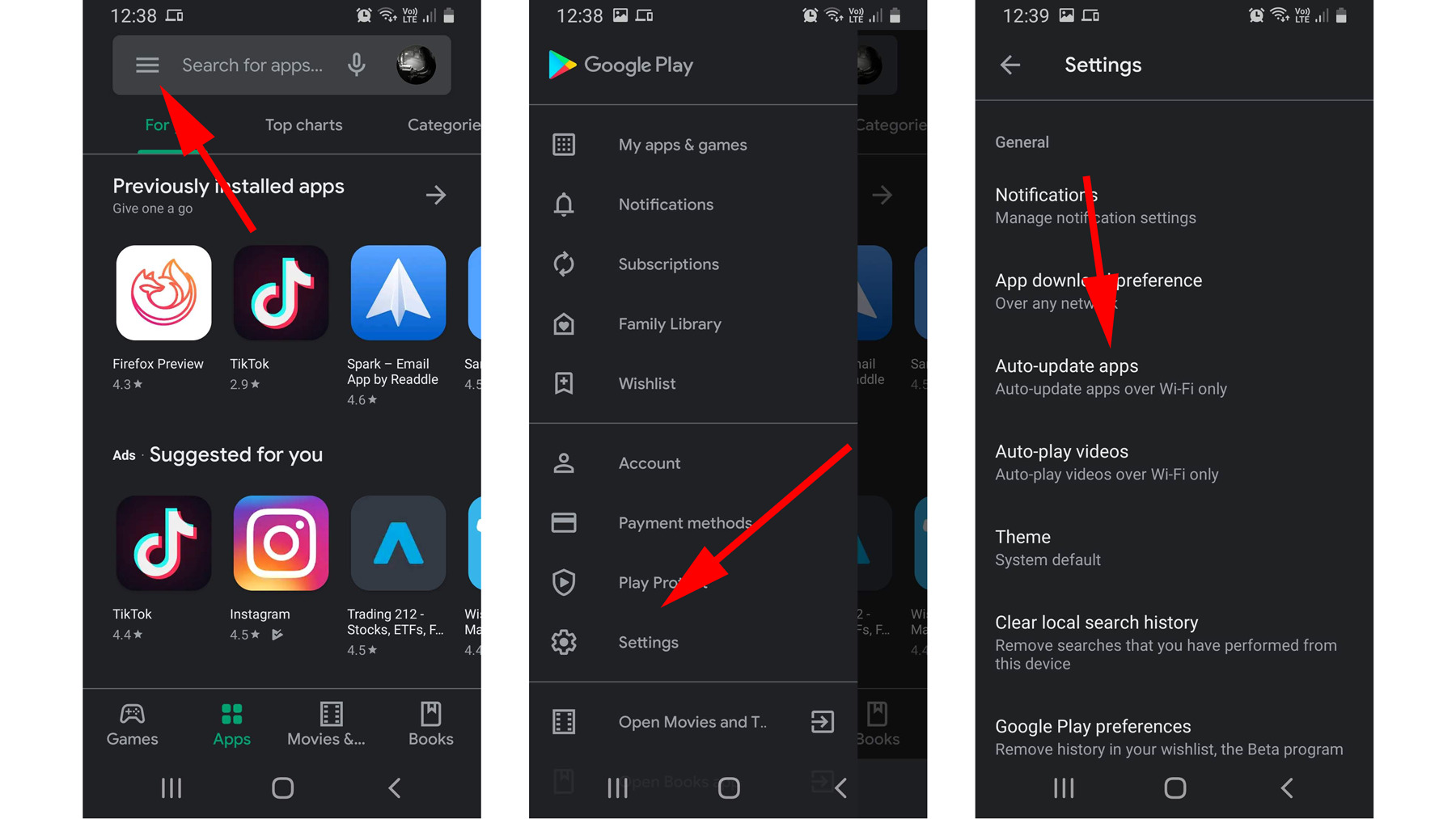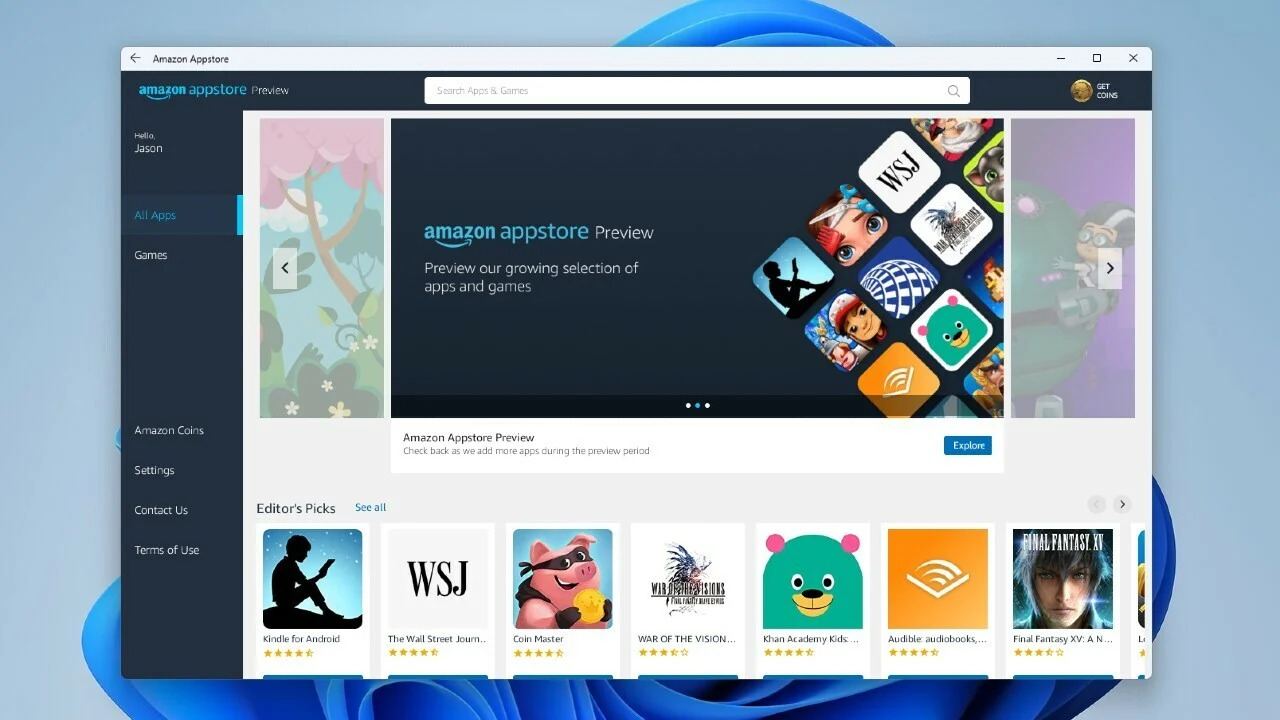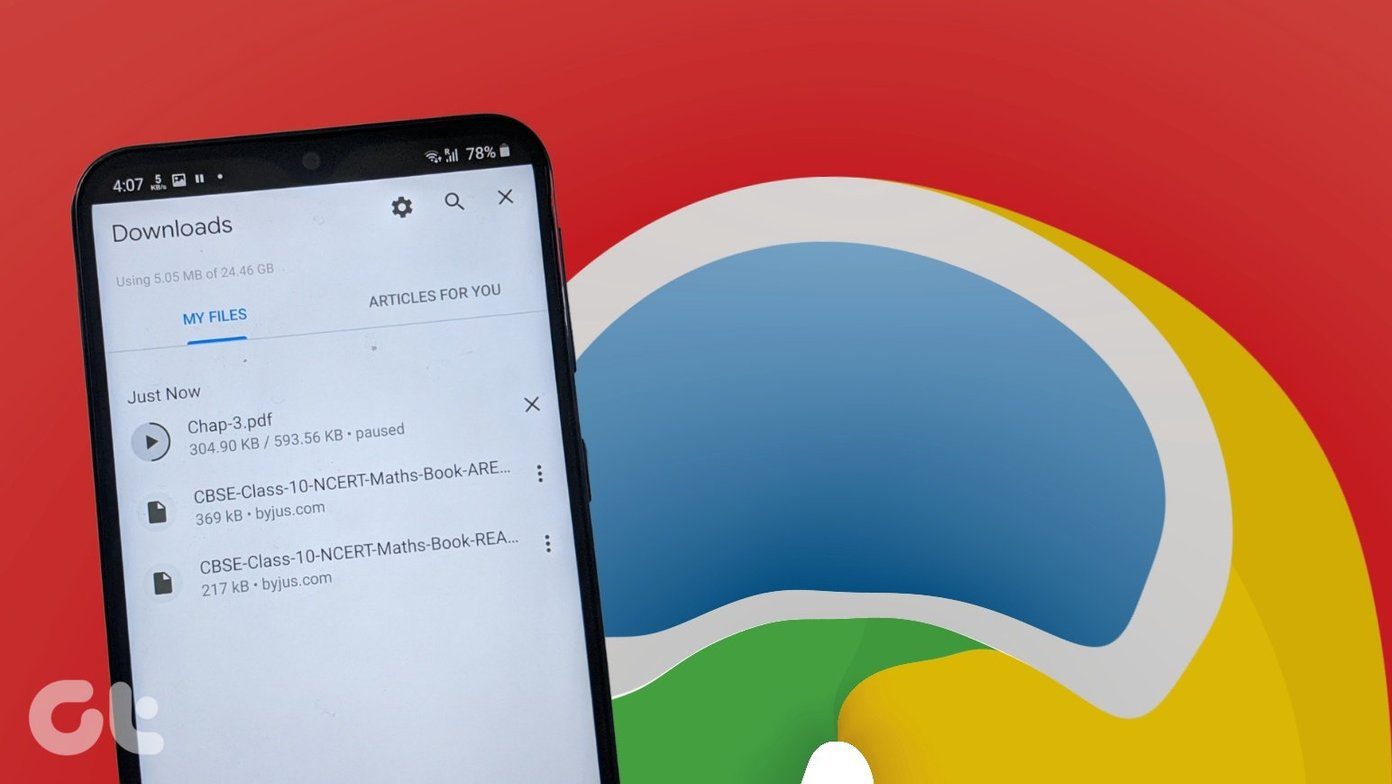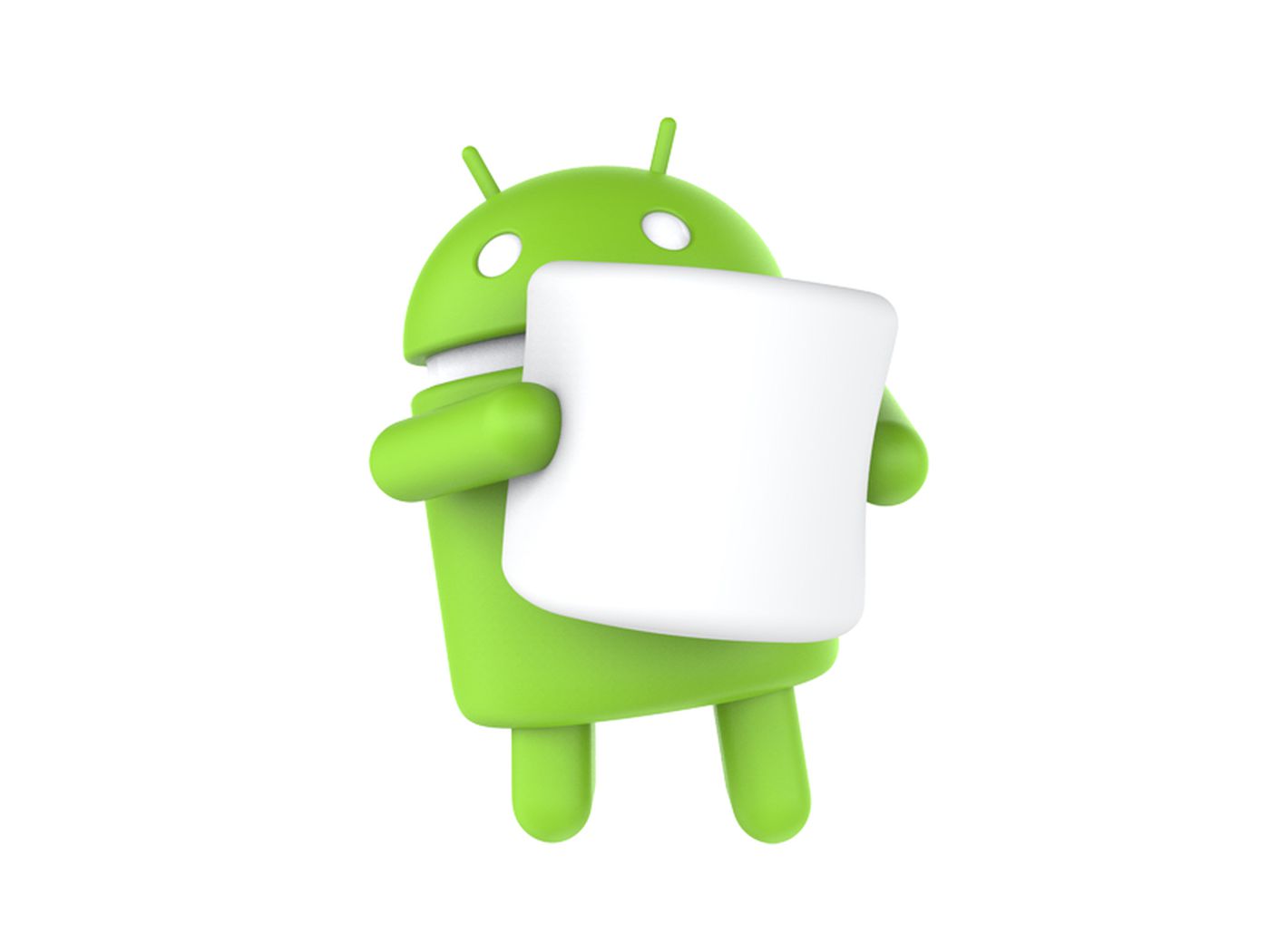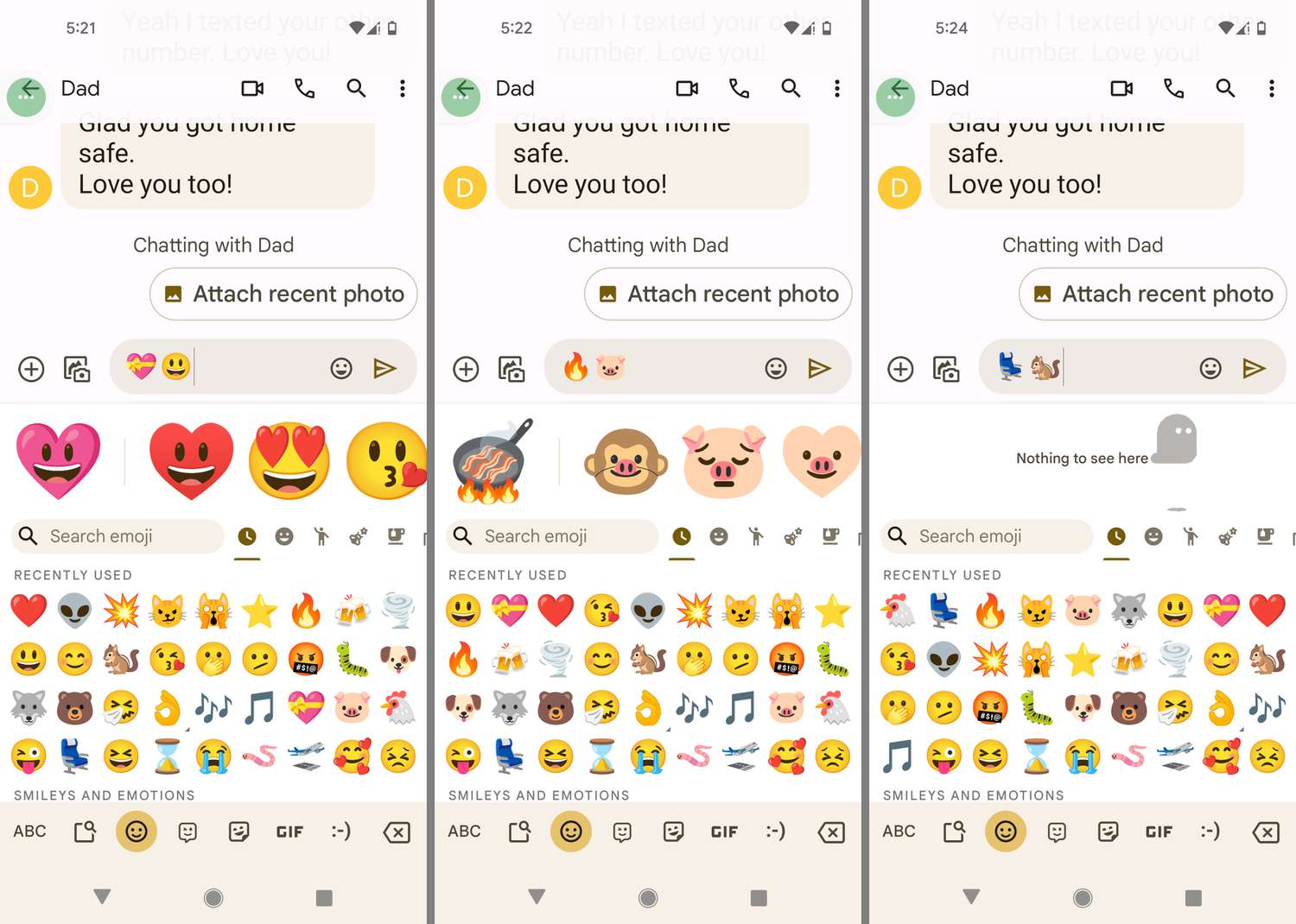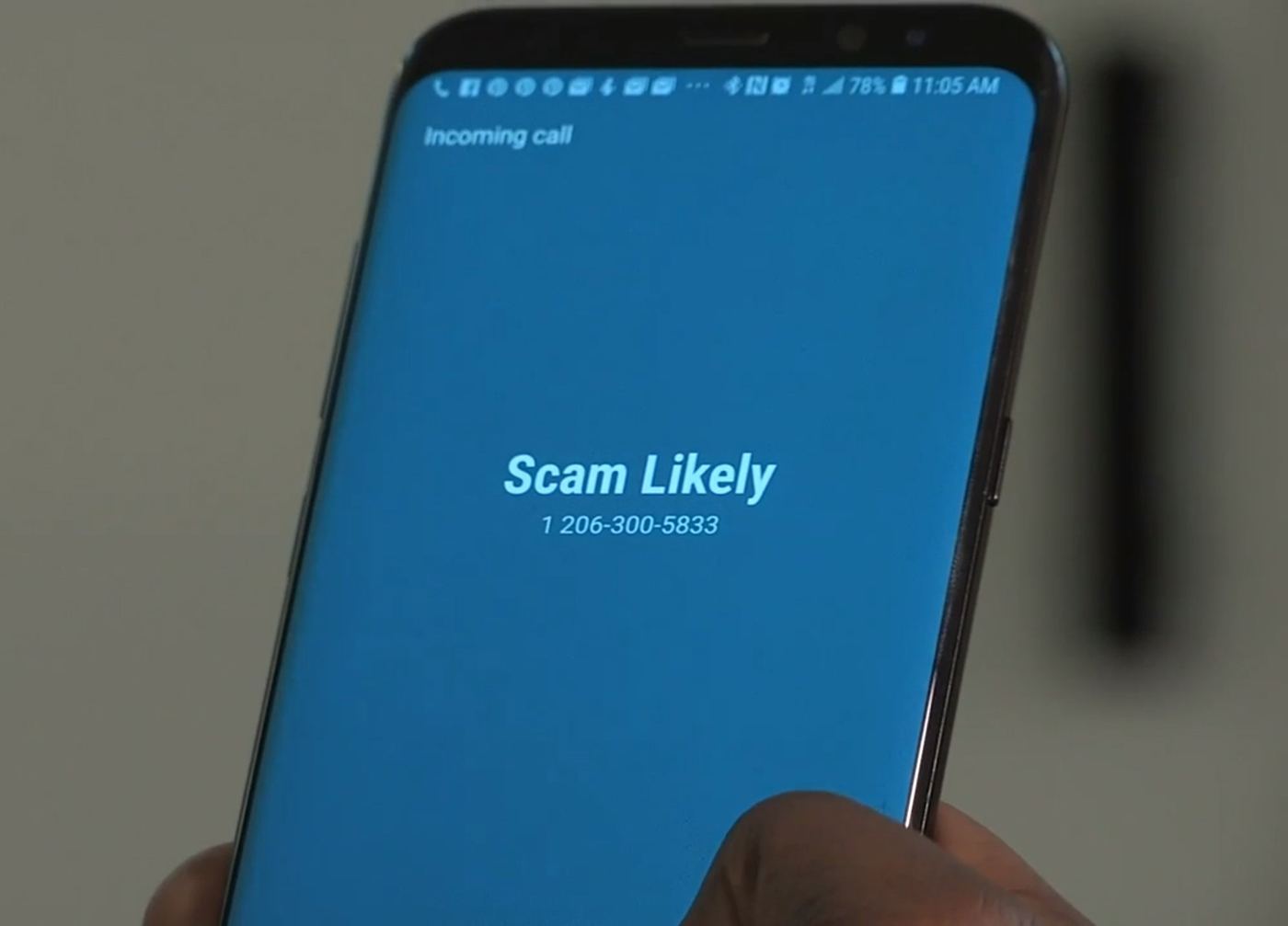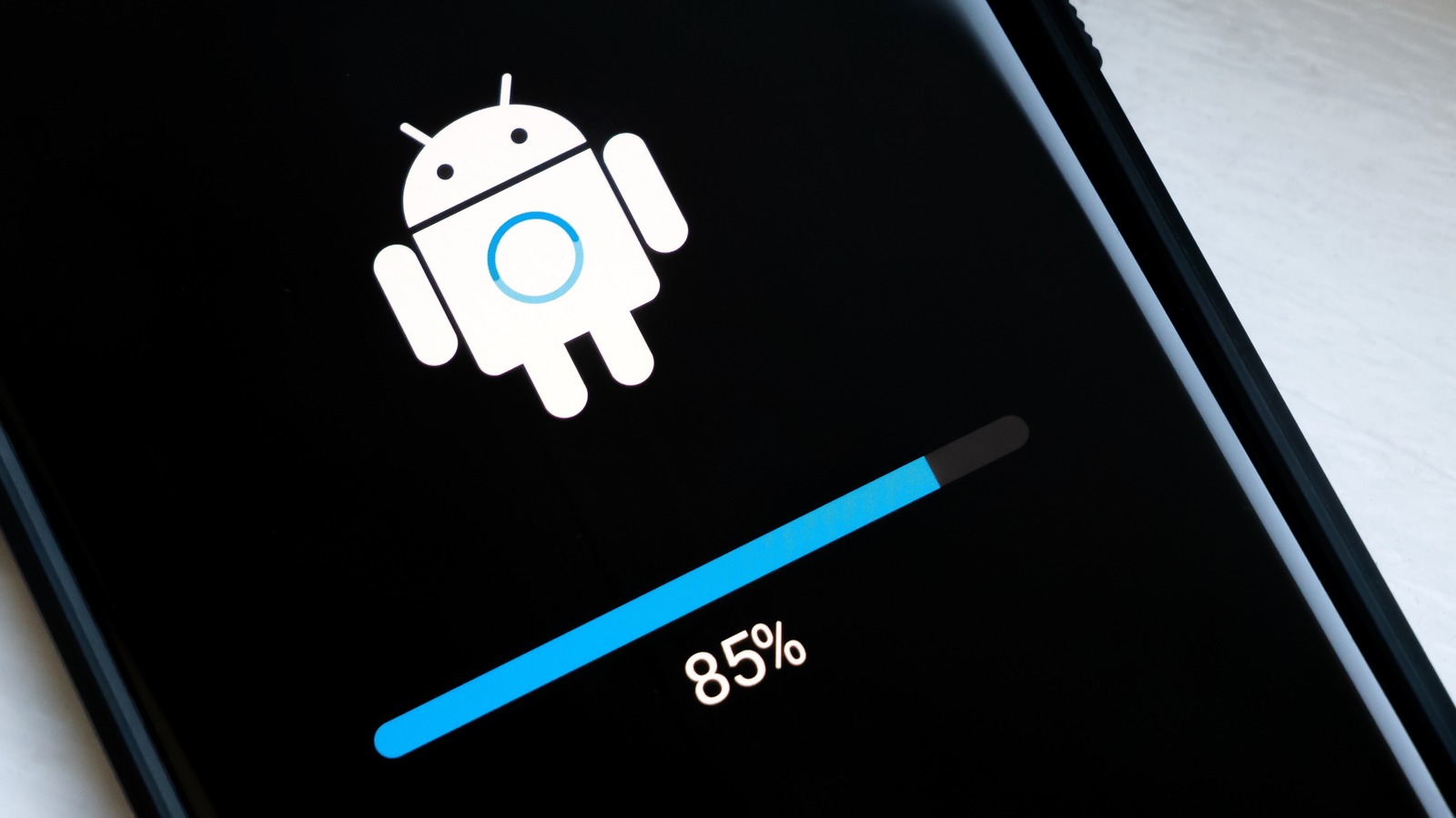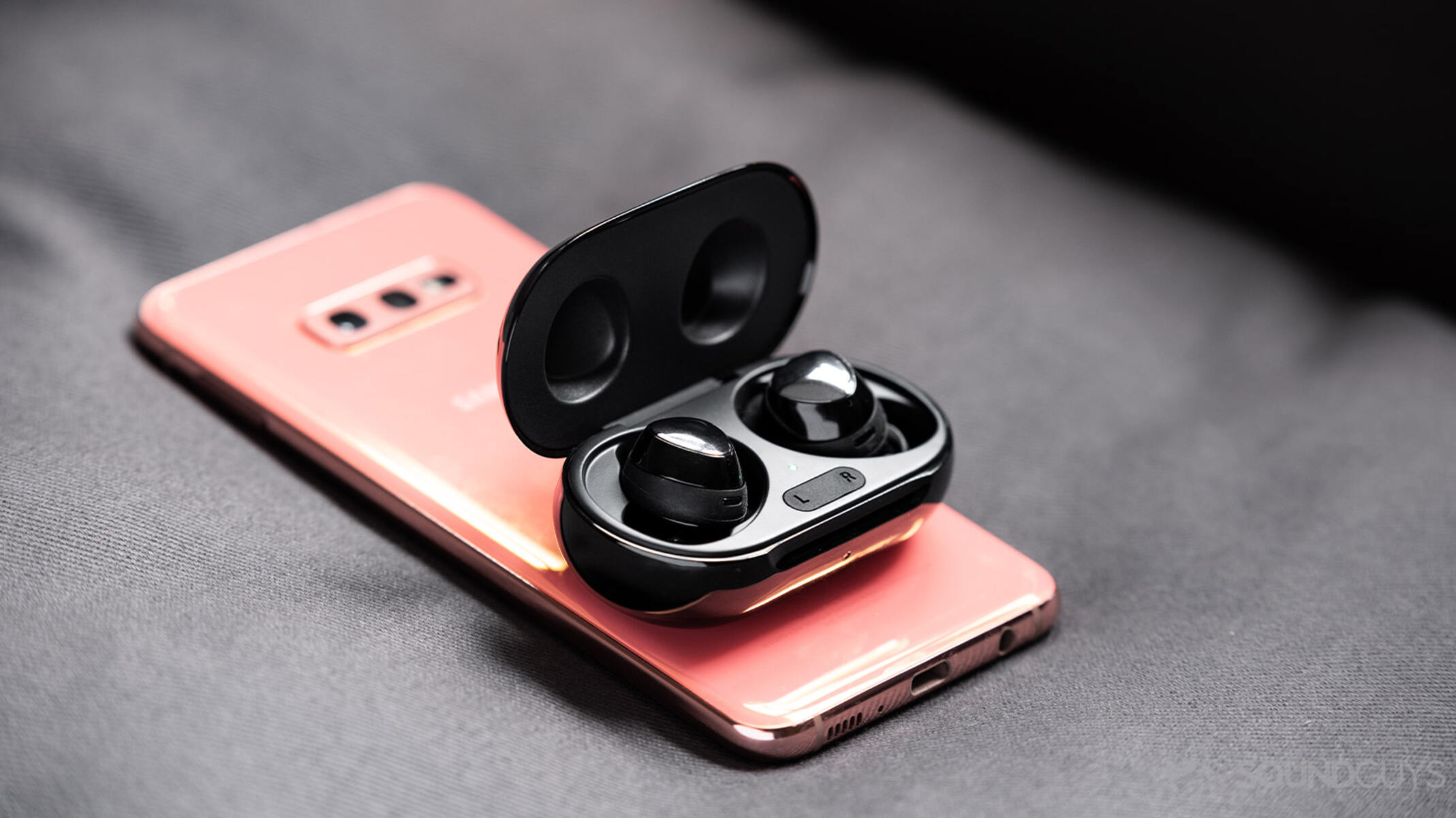Overview of app updates on Android
App updates on Android play a crucial role in ensuring that your apps stay up-to-date with the latest features, bug fixes, and security enhancements. Regularly updating your apps not only enhances their performance but also protects your device from potential vulnerabilities. This section provides an overview of how app updates work on Android and the different methods you can use to update your apps.
Android offers two primary ways to update your apps: automatic updates and manual updates. Automatic updates are enabled by default on most Android devices and allow your apps to be updated automatically without any user intervention. When a new update becomes available, the app will be updated in the background, and you’ll receive a notification once the update is complete.
If you prefer more control over the updating process, you can choose to manually update your apps. This gives you the flexibility to update specific apps at your convenience. Manual updates can be done individually, where you select a particular app to update, or you can update all your apps at once.
To manually update an individual app, go to the Google Play Store and search for the app you want to update. If an update is available, you’ll see an “Update” button. Tap on it, and the app will start updating. Alternatively, you can enable automatic updates for specific apps, allowing them to update automatically whenever a new version is available.
Checking for pending app updates is easy. Open the Google Play Store app, tap on the three horizontal lines in the upper-left corner to access the menu, and select “My apps & games.” This will show you a list of all your installed apps with any available updates. Simply tap on “Update all” to install all pending updates or manually select the apps you want to update.
If you encounter any issues with app updates, there are some troubleshooting steps you can try. Clearing the cache of the Google Play Store, restarting your device, or checking your internet connection can often resolve common update problems.
Managing app updates in the Google Play Store is also straightforward. You can customize your update settings, such as enabling or disabling automatic updates altogether or setting them to occur only when connected to Wi-Fi. These settings give you greater control over how and when your apps are updated.
It’s important to pay attention to app update notifications. These notifications inform you when new updates are available for your installed apps. While it can be tempting to ignore or dismiss them, keeping your apps up-to-date is crucial for security and optimal performance.
In summary, app updates on Android are essential to keep your apps running smoothly and securely. You can choose between automatic and manual updates, depending on your preferences. Regularly checking for updates and keeping your apps up-to-date ensures you have access to the latest features and improvements that developers release.
Automatic app updates
Automatic app updates are a convenient feature available on Android devices that allow applications to be updated without any manual intervention. By enabling automatic updates, you can ensure that your apps stay up-to-date with the latest features, bug fixes, and security patches.
When automatic updates are enabled, your device will periodically check for updates to your installed apps and download them in the background. This means that you don’t have to manually search for updates or initiate the update process yourself.
To enable automatic app updates on your Android device, follow these simple steps:
- Open the Google Play Store app on your device.
- Tap on the three horizontal lines in the upper-left corner to open the side menu.
- Select “Settings” from the menu options.
- Scroll down and tap on “Auto-update apps.”
- Choose the option that best suits your preferences:
- Auto-update apps over any network: This option allows your apps to be updated automatically, whether you’re connected to Wi-Fi or using mobile data. Keep in mind that enabling this option may incur additional data charges if you’re not connected to Wi-Fi.
- Auto-update apps over Wi-Fi only: With this option selected, your apps will only update when you’re connected to a Wi-Fi network. This is a recommended option if you have limited data or want to avoid data charges.
- Don’t auto-update apps: If you prefer complete control over your app updates and want to manually update them, choose this option. Remember to regularly check for updates to stay current.
- Once you’ve selected your preferred option, your automatic app updates settings will be saved.
It’s worth noting that automatic updates may not be available for all apps, as it depends on the app developer’s settings. Some developers choose to release updates manually or provide updates only when certain conditions are met.
In situations where automatic updates are not available, you will still receive notifications when an update is available for manual installation. It’s recommended to periodically check the Google Play Store for updates to ensure you have the latest versions of your installed apps.
Automatic app updates are a hassle-free way to keep your apps updated and ensure you have the best user experience. By taking advantage of this feature, you can stay up-to-date with the latest improvements and security enhancements without any effort on your part.
How to manually update apps on Android
While automatic app updates are convenient, you may prefer to have more control over when and which apps to update on your Android device. Manually updating apps allows you to selectively update specific applications or choose to update all of your apps at once.
Here’s how you can manually update apps on Android:
- Open the Google Play Store app on your device.
- Tap on the three horizontal lines in the upper-left corner to open the side menu.
- Select “My apps & games” from the menu options.
- You will see a list of your installed apps, divided into “Updates” and “Installed” tabs.
To update individual apps:
- Scroll through the “Updates” tab to find the app(s) you want to update.
- If an update is available, you will see an “Update” button next to the app name. Tap on it.
- The app will start updating, and you can monitor the progress on the progress bar.
To update all apps at once:
- In the “Updates” tab, tap on the “Update all” button, located at the top-right corner of the screen.
- All available app updates will begin downloading and installing simultaneously.
- You can monitor the progress of each update in the notification panel.
It’s important to note that some app updates may require additional permissions or device access. When prompted, review the update details and permissions before proceeding with the installation.
Additionally, for apps that require a Wi-Fi connection or have large updates, it’s recommended to connect to a stable Wi-Fi network to avoid excessive data usage or potential interruptions during the update process.
You can also enable automatic updates for specific apps if you want to combine the convenience of automatic updates with more control over certain applications. To do this:
- Go to the “Updates” tab in the Google Play Store.
- Find the app you want to enable automatic updates for and tap on it.
- In the app’s details page, tap on the three dots in the upper-right corner to access the menu.
- Select “Enable auto-update.”
Manually updating apps on Android gives you the flexibility to choose when and how to update your applications. Whether you prefer to update apps individually or all at once, it ensures that your apps are up-to-date with the latest features, improvements, and security patches.
Updating individual apps
Updating individual apps on Android allows you to selectively update specific applications on your device. This gives you the flexibility to update only the apps you use frequently or prioritize critical updates when they become available.
Here’s how you can update individual apps on Android:
- Open the Google Play Store app on your Android device.
- Tap on the three horizontal lines in the upper-left corner to open the side menu.
- Select “My apps & games” from the menu options.
- In the “Updates” tab, you’ll find a list of apps with available updates.
- Scroll through the list and locate the app you wish to update.
If an update is available for the app, you’ll see an “Update” button next to the app name. Tap on it to initiate the update process. The app will begin downloading the update, and you can monitor the progress on the progress bar.
It’s important to ensure a stable internet connection during the update process, especially for larger updates. Connecting to a Wi-Fi network is recommended to conserve mobile data and ensure a smooth update experience.
Some app updates may require additional permissions or access to certain features on your device. When prompted, carefully review the update details and permissions before proceeding with the installation.
Once the update is complete, you’ll receive a notification indicating that the app has been successfully updated. You can either open the app directly from the notification or access it from your app drawer as you normally would.
Regularly updating individual apps is crucial for several reasons. It ensures that you have access to the latest features and improvements provided by the app developers. Updates often include bug fixes and security patches that address vulnerabilities, enhancing the overall stability and security of the app.
In cases where an app is not functioning properly or experiencing issues, updating it to the latest version may resolve the problem. Developers often release updates to address known issues and improve performance.
By selectively updating apps, you can optimize the storage space on your device. Updates often include optimizations and smaller file sizes, ensuring that the app runs efficiently and minimizing the impact on device storage capacity.
Updating individual apps allows you to stay in control of the update process on your Android device. It empowers you to prioritize updates based on your needs and preferences, ensuring that your most frequently used apps are always up-to-date with the latest features and improvements.
Updating all apps at once
Updating all apps at once on your Android device is a convenient way to ensure that all of your installed applications are up-to-date with the latest features, bug fixes, and security patches. This method saves you time and effort by allowing you to update multiple apps simultaneously.
To update all apps at once on Android, follow these simple steps:
- Open the Google Play Store app on your Android device.
- Tap on the three horizontal lines in the upper-left corner to open the side menu.
- Select “My apps & games” from the menu options.
- In the “Updates” tab, you will see a list of apps with available updates.
- At the top-right corner of the screen, tap on the “Update all” button.
Once you tap on “Update all,” all available app updates will begin downloading and installing simultaneously. You can monitor the progress of each update on the progress bar or in the notification panel of your device.
It’s important to ensure a stable internet connection during the update process, especially for larger updates. Connecting to a Wi-Fi network is recommended to conserve mobile data and ensure a smooth update experience.
Some app updates may require additional permissions or access to certain features on your device. When prompted, carefully review the update details and permissions before proceeding with the installation.
Once all the updates are complete, you will receive a notification indicating that all apps have been successfully updated. You can either open the updated apps directly from the notification or access them from your app drawer as you normally would.
Updating all apps at once ensures that you have the latest versions of all your installed applications. This is crucial for several reasons:
Firstly, updates often include new features and improvements provided by the app developers. By updating all apps, you can take advantage of the latest functionalities and enhancements that developers release.
Secondly, updates often address bugs and performance issues identified in previous versions. By keeping your apps up-to-date, you can enjoy a smoother and more stable experience while using the applications.
Lastly, updating all apps at once helps to ensure the security of your device. App updates frequently include security patches that address vulnerabilities and protect your device from potential threats.
By updating all apps simultaneously, you can save time and ensure that your Android device is equipped with the latest versions of all your installed applications. This not only enhances your overall user experience but also helps to keep your device secure and protected.
Checking for pending app updates
Checking for pending app updates on your Android device ensures that you are aware of any available updates for your installed applications. Regularly checking for updates allows you to stay up-to-date with the latest features, improvements, and bug fixes provided by app developers. Here’s how you can check for pending app updates:
- Open the Google Play Store app on your Android device.
- Tap on the three horizontal lines in the upper-left corner to open the side menu.
- Select “My apps & games” from the menu options.
- In the “Updates” tab, you will see a list of apps with available updates.
In this tab, you’ll be able to view all the apps that have updates pending. Each app will display an “Update” button next to the app’s name if an update is available.
To install all pending updates, simply tap on the “Update all” button located at the top-right corner of the screen. This will download and install updates for all the apps that have updates available.
If you prefer to update specific apps, you can individually select the apps you wish to update by tapping on their respective “Update” buttons. This gives you more control over the update process and allows you to prioritize certain applications.
It’s important to note that you need to have a stable internet connection, preferably Wi-Fi, to download app updates. Larger updates may consume a significant amount of data, so using Wi-Fi can help conserve your mobile data allowance and provide a more reliable and faster download experience.
Regularly checking for updates is essential to ensure that your apps are optimized with the latest features and improvements. Developers often release updates to address bugs, enhance user experiences, and introduce new functionalities. By keeping your apps up-to-date, you can benefit from these enhancements and enjoy a smoother and more secure app usage.
Checking for pending app updates is a quick and straightforward process that should be incorporated into your routine device maintenance. Being proactive about updating your apps ensures that you have access to the latest app versions and can take advantage of the advancements made by app developers.
Remember, app updates not only bring new features but also fix potential issues, improve performance, and enhance the overall user experience. Make it a habit to regularly check for pending app updates in the Google Play Store to stay current with the latest app versions available for your Android device.
Enabling auto-update for specific apps
Enabling auto-update for specific apps on your Android device gives you the flexibility to automate the update process for selected applications. This feature allows you to ensure that your preferred apps are always up-to-date without having to manually check for updates. Here’s how to enable auto-update for specific apps:
- Open the Google Play Store app on your Android device.
- Tap on the three horizontal lines in the upper-left corner to open the side menu.
- Select “My apps & games” from the menu options.
- In the “Updates” tab, scroll through the list of apps to find the one you want to enable auto-update for.
- Tap on the app’s name to access its detail page.
- In the top-right corner of the app’s detail page, tap on the three dots to open the menu.
- From the menu, select “Enable auto-update.”
Once you’ve enabled auto-update for a specific app, the Google Play Store will automatically update that app whenever a new version becomes available. This ensures that you have the latest features, bug fixes, and security patches without needing to manually initiate the update process.
Enabling auto-update for specific apps can be particularly useful for apps that you heavily rely on or constantly use. By automating the update process, you can ensure that these crucial apps are always optimized and functioning at their best.
It’s worth noting that enabling auto-update for specific apps does not affect other apps on your device. You can customize the auto-update setting for different apps based on your preferences and requirements. This level of control allows you to prioritize certain apps for auto-updates while manually updating others.
Keep in mind that auto-updates consume data, especially if you don’t have access to a Wi-Fi network. If you have limited data or prefer to download updates only via Wi-Fi, it’s recommended to enable the “Auto-update apps over Wi-Fi only” option in the Google Play Store settings. This ensures that auto-updates occur only when your device is connected to Wi-Fi, helping you conserve mobile data usage.
By enabling auto-update for specific apps, you can simplify the update process and ensure that your preferred applications are always up-to-date. This feature saves you time and effort, allowing you to focus on using the apps while the Google Play Store automatically takes care of keeping them current.
Remember to periodically check the auto-update settings in the Google Play Store to review and adjust the apps that have auto-update enabled based on your changing needs and preferences.
Troubleshooting common issues with app updates
While app updates on Android typically run smoothly, you may encounter occasional issues that prevent apps from updating successfully. Here are some common issues you may face with app updates and troubleshooting steps to resolve them:
1. Insufficient storage: If you receive an error message indicating insufficient storage when attempting to update an app, it means there isn’t enough space on your device to accommodate the update. To resolve this, you can try deleting unnecessary files or apps to free up space or move apps to an external storage location, such as an SD card.
2. Slow or unstable internet connection: A slow or unstable internet connection can hinder app updates. Ensure that you have a stable and fast internet connection, preferably Wi-Fi, before initiating app updates. If you’re using mobile data, check your network signal strength and consider switching to Wi-Fi for better download speeds.
3. Clear app cache: Clearing the cache of the Google Play Store app may help resolve update issues. Go to your device’s Settings, tap on “Apps” or “Applications,” find and open the Google Play Store app, and select “Storage.” Tap on “Clear cache” to clear the cache. Restart your device and try updating the app again.
4. Restart your device: A simple device restart can sometimes resolve minor issues with app updates. Restart your Android device and try updating the app again. This clears temporary data and can help resolve any background issues affecting the update process.
5. Check internet connectivity: Ensure that your device is properly connected to the internet. Try loading a website or using other internet-reliant apps to verify connectivity. If you’re unable to access the internet, troubleshoot your network connection or contact your internet service provider for assistance.
6. Check for system updates: Outdated Android system software can sometimes interfere with app updates. It’s recommended to check for and install any pending system updates on your device before attempting app updates. Keeping your device’s operating system up-to-date ensures compatibility with the latest app versions.
7. Update Google Play Store: Occasionally, issues with app updates may stem from problems with the Google Play Store app itself. Ensure that you have the latest version of the Google Play Store installed on your device. You can check for updates in the Google Play Store app under “Settings” > “About” > “Play Store version.”
8. Disable VPN or proxy: If you’re using a VPN or proxy service on your device, it may interfere with app updates. Disable any VPN or proxy temporarily and try updating the app again. Once the update is complete, you can re-enable the VPN or proxy if necessary.
If you have followed these troubleshooting steps and are still experiencing issues with app updates, you may consider contacting the app developer or seek support from the Google Play Store Help Center for further assistance.
Remember to regularly check for app updates and resolve any issues promptly to ensure you have access to the latest features, bug fixes, and security patches that app developers release.
Managing app updates in the Google Play Store
The Google Play Store provides a range of features and settings that allow you to manage app updates effectively. By understanding and utilizing these tools, you can ensure that your apps are updated, optimize storage space, and customize the update process based on your preferences. Here’s how you can manage app updates in the Google Play Store:
1. Automatic updates: The Google Play Store offers automatic app updates as a default setting. To enable or modify this setting, open the Google Play Store app, tap on the three horizontal lines in the upper-left corner to open the side menu, select “Settings,” and choose the “Auto-update apps” option. From there, you can select between updating apps over any network, Wi-Fi only, or disabling automatic updates altogether.
2. Update via Wi-Fi only: If you have limited data or prefer to conserve mobile data usage, you can choose to update apps only when connected to a Wi-Fi network. This helps prevent unexpected data charges and ensures a smoother update experience. In the “Auto-update apps” settings, select the “Auto-update apps over Wi-Fi only” option.
3. Manual updates: If you prefer to manually update your apps, you can disable automatic updates in the settings. This way, you can review each update individually before proceeding. Simply select the “Don’t auto-update apps” option in the “Auto-update apps” settings.
4. Update notifications: The Google Play Store sends notifications when app updates are available. These notifications prompt you to review and install the updates. It’s recommended to keep the notifications enabled to stay informed about new versions of your installed apps.
5. Update settings for specific apps: For specific apps, you can customize the update settings separately. Open the Google Play Store, go to “My apps & games,” and select the app you want to customize. In the app’s detail page, tap on the three dots in the top-right corner to open the menu. From there, you can enable or disable auto-updates for the selected app.
6. Check for updates manually: Aside from automatic updates, you can manually check for available app updates anytime. Open the Google Play Store, go to “My apps & games,” and navigate to the “Updates” tab. Here, you’ll find a list of apps with pending updates. Tap on the “Update all” button to update all apps, or manually select specific apps to update.
7. Uninstall unused or unwanted apps: To free up storage space and streamline your app updates, consider uninstalling apps that you no longer use or need. Open the Google Play Store, go to “My apps & games,” and navigate to the “Installed” tab. From there, you can select apps to uninstall, reducing clutter and optimizing your device’s storage capacity.
8. Review update details: Before updating an app, it’s a good practice to review the update details and changelog provided by the app developer. This allows you to understand the changes, improvements, and bug fixes that come with the update. You can find the update details for each app in the Google Play Store’s “My apps & games” section, under the specific app’s detail page.
By effectively managing app updates in the Google Play Store, you can stay in control of the update process on your Android device. Whether it’s enabling automatic updates, customizing settings for specific apps, or manually updating apps, you can ensure that your apps are always up-to-date with the latest features and improvements.
Understanding app update notifications
App update notifications play a crucial role in keeping you informed about the availability of new versions for your installed apps. These notifications alert you when updates are available in the Google Play Store and provide important information regarding app improvements, bug fixes, and security updates. Understanding app update notifications can help you stay up-to-date with the latest app versions on your Android device. Here’s what you need to know:
1. Notification types: App update notifications are typically displayed as system notifications on your device. They can appear as a small icon in the notification bar, accompanied by a brief message indicating the app that has an available update. Tapping on the notification opens the Google Play Store for further action.
2. Timing of notifications: App update notifications are generally triggered when updates become available on the Google Play Store. The timing of these notifications may vary based on the app developer’s release schedule and user device settings. However, you can expect to receive these notifications periodically as updates are rolled out for your installed apps.
3. Importance of notifications: App update notifications should not be ignored or dismissed lightly. They provide valuable information about new features, bug fixes, and security patches that app developers release. Updating apps promptly ensures that you have access to the latest app functionalities and improvements, enhances performance, and protects you from potential vulnerabilities.
4. Reviewing update details: It’s recommended to review the update details provided in the Google Play Store before proceeding with app updates. App update notifications offer a summary of the changes, improvements, and bug fixes that come with the update. By reviewing these details, you can gain insights into what the update offers and make an informed decision about updating the app.
5. Enabling or disabling notifications: If you don’t want to receive app update notifications, you can disable them in the settings of the Google Play Store app. However, it’s generally recommended to keep these notifications enabled, as they help you stay current with the latest app versions and ensure that you have up-to-date apps on your device.
6. Notification customization: Android devices often provide options to customize notification settings. You can adjust settings to control how app update notifications are displayed, including sound, vibration, or direct display on the lock screen. Refer to your device’s settings to explore notification customization options.
7. Clearing app update notifications: After updating an app or reviewing the update details, you can clear the corresponding app update notification from the notification panel of your device. This helps keep your notification area organized and decluttered.
Understanding app update notifications enables you to stay informed about new versions of your installed apps. By paying attention to these notifications and promptly updating your apps, you can take advantage of the latest features, bug fixes, and security enhancements provided by app developers. Keeping your apps updated enhances your user experience, ensures optimal performance, and provides a secure app usage environment on your Android device.
Frequently Asked Questions about App Updates on Android
App updates are a common aspect of using Android devices, and it’s natural to have questions about how they work and how to manage them effectively. Here are some frequently asked questions and their answers related to app updates on Android:
1. How do I update my apps on Android?
To update your apps on Android, open the Google Play Store app, go to “My apps & games,” and navigate to the “Updates” tab. From there, you can select individual apps or tap “Update all” to update all apps that have available updates.
2. Can I disable automatic app updates?
Yes, you can disable automatic app updates. In the Google Play Store settings, select “Auto-update apps” and choose the “Don’t auto-update apps” option. This allows you to manually update apps as desired.
3. How often should I update my apps?
It’s generally recommended to update your apps regularly to ensure you have access to the latest features, bug fixes, and security patches. Set a personal routine to check for updates periodically, such as once a week or every few days.
4. What happens if I don’t update my apps?
If you don’t update your apps, you may miss out on new features, bug fixes, and security updates. Outdated apps might not perform optimally and could be more susceptible to vulnerabilities. Updating apps ensures optimal performance and a more secure app usage experience.
5. Can I update apps without an internet connection?
No, you need an internet connection to download app updates from the Google Play Store. However, you can choose to download updates over Wi-Fi only if you want to conserve mobile data.
6. Can I update apps on multiple Android devices?
If you use the same Google account on multiple Android devices, app updates will be synchronized across those devices. Once you update an app on one device, it should reflect on other devices connected to the same account.
7. What if an app update causes problems or doesn’t work properly?
If an app update causes issues or doesn’t work properly, you can try troubleshooting steps such as clearing the app cache, restarting your device, or reinstalling the app. If problems persist, contact the app developer’s support team for further assistance.
8. Do app updates cost money?
Most app updates are free of charge. However, some apps may introduce paid features or offer premium versions through in-app purchases. Make sure to check the app’s details before updating to ensure you are aware of any potential costs associated with new features or functionalities.
9. Can I stop a specific app from updating?
Yes, you can stop a specific app from updating. In the Google Play Store settings, disable auto-updates and then go to the specific app’s settings page. Turn off the “Enable auto-update” option for that particular app.
10. Can I roll back to a previous version of an app?
In most cases, you cannot directly roll back to a previous version of an app through the Google Play Store. However, you can search for the APK file of the desired older version online and install it manually, keeping in mind that it may not be officially supported or contain the latest features or security updates.
By understanding how app updates work and addressing common concerns, you can better manage your apps on Android. Regularly updating your apps ensures you have access to new features, improved performance, and enhanced security, ultimately enhancing your overall Android experience.







